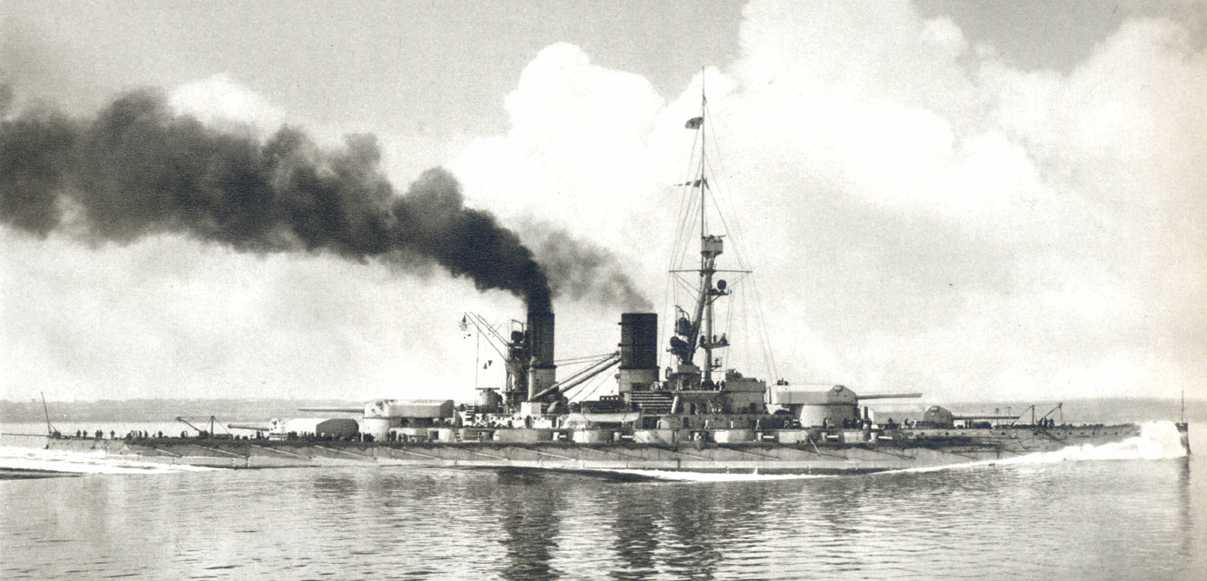| Notes:
1) Turrets were powered as much as possible
with electric motors directly, with electricaly powered hydraulics being
used only for the elevating gear and for the hoists. Each turret
had a machinery room directly below the turret, followed by a handling
room. At the bottom of the stalk was a cartridge handling room which
held 36 fore charges. Main charges and additional fore charges were
stored in the magazines. Cartridges were loaded onto a central hoist
below the handling room while projectiles were loaded on the next deck
below. Projectile hoists ran directly from the handling room to the
gunhouse. Once in the gunhouse, the projectiles and cartridges were
power rammed towards the rear of the turret onto powered loading cars which
ran on rails across the turret. These cars could feed either gun,
but normally the guns were loaded together. As the breech mechanism
did not extend past the end of the gun, the breeches could be opened before
the cars were in place, thus speeding the loading cycle. Shell and
cartridges were loaded by a chain and telescoping rammer. The projectile
was rammed first and then both propellant charges were rammed as a unit.
The total length of both charges was 63 in (160 cm).
2) Typical of German designs, these turrets
ran on ball races containing 144 steel ball bearings of about 6.5 inches
(16.5 cm) in diameter.
3) British post-war analysis of the mountings
on Baden criticized them for their lack of flash protection, but this seems
overstated. The German use of enclosing all charges in brass greatly
reduced the risk of flash igniting the charges thus they did not need the
elaborate anti-flash fittings found in British post-Jutland designs.
The analysis noted that the German turrets were less foolproof than British
designs as there were places where mistakes could jam them. The British
report further stated that there was "a remarkable absence of precautions
against sabotage" which seems more of a curious indictment against British
sailors than a criticism of the German design.
4) ADM 186/251 notes that the shell grabs
and the foot grip plating used in the shell rooms were both very efficient
and should be copied in future British designs. However, it also
notes that the Auxiliary Loading Chamber was "both a poor and an elaborate
arrangement." The Auxiliary Loading Chamber allowed an "alternate
supply of six projectiles per gun to be sent to the gun-house by means
of an electrically driven hoist. There is no ready means of replenishing
the secondary loading compartment from the shell room."
5) Elevation in Baden was not increased
during the war. Any ship completed after Bayern would probably also
have had an elevation range of -5 / +20 degrees.
6) Gun axes were 145.6 in (370 cm).
7) Armor thickness given in "Naval Weapons
of World War One" by Norman Friedman:
Baden class
Face:
14.0 in (35 cm)
Sides:
9.8 in (25 cm)
Rear:
11.4 in (29 cm)
Roof -
Flat: 4.7 in (12 cm)
Roof -
Front: 7.9 in (20 cm)
Roof -
Sides: 4.7 in (12 cm)
Ersatz Yorck class
Face:
11.8 in (30 cm)
Sides:
9.8 in (25 cm)
Rear:
11.4 in (29 cm)
Roof -
Flat: 5.9 in (15 cm)
Roof -
Front: 9.8 in (25 cm)
Roof -
Sides: 4.7 in (12 cm) |
